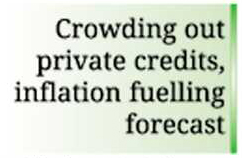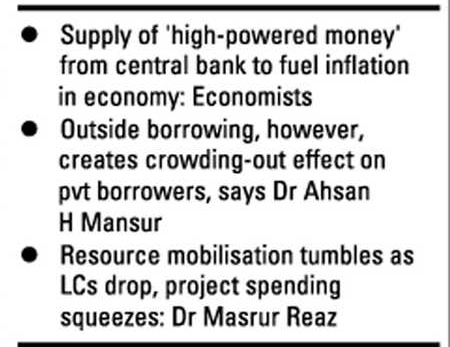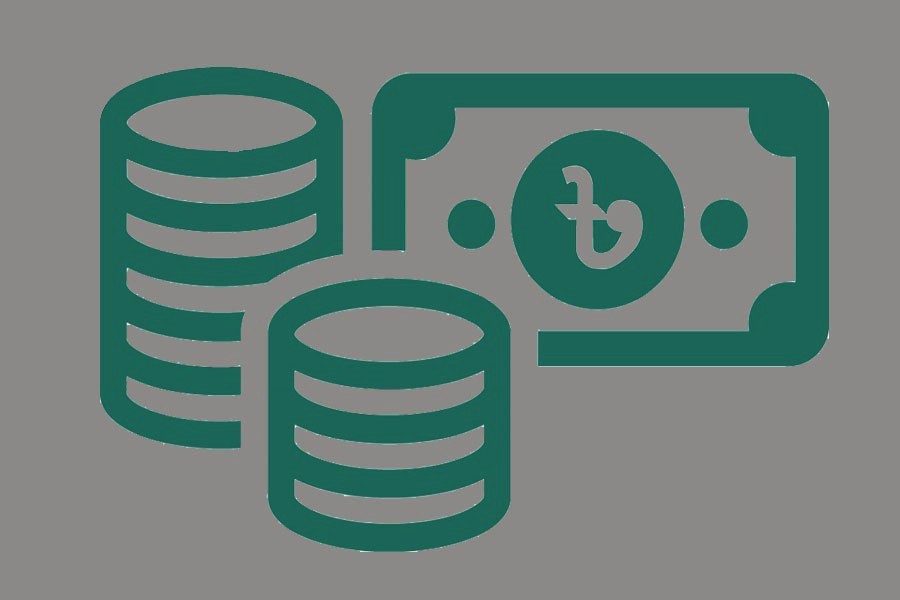Government borrowings from banking system, including the central bank, nearly doubled to Tk 319.72 billion in six months to December 15 over the same period a year before, as resource mobilisation contracted.
The net amount is approximately 63-percent higher than the past corresponding period's borrowings from banks, official data show, giving economists to believe that the scale of borrowing may go up due to higher development spending in months ahead.
During its corresponding period a year earlier the figure was Tk 196.36 billion.

The government's annual borrowing target from the banking system is over Tk 1.0 trillion.
The government borrowing has been surged mainly due to the fall in the net sales of the national savings certificates coinciding with a drop in funds from external sources.
A senior central banker told the FE that the borrowing remained much lower than its annual target.
The official, familiar with government debts, said, "We don't know what will happen in the coming months…."
But he said the banking sector has liquidity shortages. "Money is adequate outside the bank but the banking sector remained tight."

Economists said Tuesday most of the government borrowings came from the central bank which actually created additional 'high-powered money' in the economy.
"To my knowledge, most money in government borrowings came from the central bank," says Dr Ahsan H. Mansur, executive director of the Policy Research Institute of Bangladesh or PRI.
He notes that money circulation fuels inflation in the economy. On the other hand, borrowing from other than banks creates crowding-out effect as the private borrowers do not get funds for the investment or business expansion.
However, Dr Mansur predicts the borrowing will jump higher after expediting implementation of the annual development programme, which traditionally goes into top gear towards final months in fiscal year in Bangladesh.
Dr M. Masrur Reaz, chairman at the Policy Exchange of Bangladesh, told the FE that this is most likely due to the slow growth in resource mobilisation.
"Between July and November import LCs were down by about 50 per cent, leading to lower trade taxes and VAT at import," Dr Masrur notes.
Also, some government projects have been slowed or spending reduced, leading to lower VAT from one of the largest sources.
"Government will have to be cautious about the pace and extent of their bank borrowing," Dr Masrur says.
"Of course, private-sector credit should ideally be lower next couple of quarters due to inflation containment which makes the issue of crowding out private sector less relevant."
Dr Masrur feels that higher public borrowings may lead to greater public spending than optimum from an inflation-containment perspective. "Hence, borrowing needs to be judicious."
However, net outstanding position of government borrowing from the banking sector (including BB) is Tk 3.022 trillion while the net outstanding position of government borrowing from Bangladesh Bank Tk 1.048 trillion.
The government tax mobilisation during the July-October of the fiscal year was Tk 909.17 billion or up 14.19 per cent.
Investment in national savings certificates has dropped during the first five months of the year. The net investment was negative at Tk 16.10 billion.


